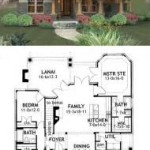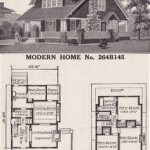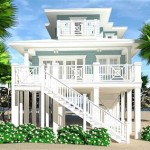Design Ideas For House Plans With In-Law Suites And Kitchens
The need for multi-generational living is on the rise, driven by factors such as aging parents, adult children returning home, and the desire for closer family bonds. Consequently, house plans incorporating in-law suites with kitchens have become increasingly popular. These suites provide a degree of independence for the occupants while still allowing them to be close to family. Designing these spaces effectively requires careful consideration of several key aspects, including privacy, accessibility, and functionality. Furthermore, the kitchen within the in-law suite must be thoughtfully planned to meet the specific needs of its users.
An in-law suite, sometimes called an accessory dwelling unit (ADU) or granny flat, is a self-contained living space within a larger home. It typically includes a bedroom, bathroom, living area, and, crucially, a kitchen. The kitchen component is what truly differentiates a suite from a simple guest room, providing the occupants with the ability to prepare their own meals and maintain a level of self-sufficiency. The design and features of the in-law suite's kitchen are paramount to its overall success and usability.
Maximizing Privacy and Independence
One of the primary goals of an in-law suite is to provide a separate and private living space. This impacts the overall house plan and the suite's placement within the home. A key factor is ensuring a separate entrance. While an internal connecting door to the main house can be useful for shared resources or emergencies, a dedicated exterior entrance is crucial for maintaining independence. This entrance should be easily accessible and ideally located away from the main entrance of the house to minimize foot traffic and potential disruptions.
Soundproofing is another vital element to consider. Walls, floors, and ceilings shared with the main house should be properly insulated to reduce noise transmission. Solid core doors and double-paned windows can further enhance sound dampening. Strategic placement of the in-law suite can also contribute to privacy. For example, locating the suite on a separate wing of the house or above a garage can minimize noise and visual intrusion on both parties.
Within the suite itself, the layout should be designed to maximize separation between living areas. The kitchen, as a potential source of noise and activity, should be strategically positioned to minimize disturbance to the bedroom or living area of the suite. A well-placed pantry or storage area can act as a buffer zone to further reduce noise transmission.
Accessibility and Universal Design Principles
Accessibility is a crucial consideration, especially if the in-law suite is intended for elderly or disabled individuals. Universal design principles should be incorporated to ensure the space is usable by people of all ages and abilities. This includes features such as wider doorways and hallways to accommodate wheelchairs or walkers. Ramps or zero-threshold entries should be implemented to eliminate steps and provide easy access from the exterior.
In the kitchen, accessibility is particularly important. Countertops should be at varying heights to accommodate both seated and standing users. Under-cabinet lighting can improve visibility, and pull-down shelves can make items easier to reach. Appliances with easy-to-use controls are also essential. Consider installing a side-by-side refrigerator instead of a traditional top-freezer model, as it requires less bending and lifting. Similarly, a front-control range can be easier to operate than one with controls on the back.
Bathroom accessibility is equally important. Grab bars should be installed in the shower and near the toilet. A walk-in shower with a built-in seat is preferable to a tub. Non-slip flooring should be used throughout the suite to prevent falls. These features not only enhance accessibility but also contribute to the overall safety and comfort of the space.
Optimizing Kitchen Functionality and Design
The kitchen in an in-law suite should be designed to be both functional and efficient, despite often being smaller than the main house kitchen. Careful planning is essential to maximize space and ensure all necessary appliances and storage are included. Compact appliances are often the best choice for in-law suite kitchens. A smaller refrigerator, a two-burner cooktop, and a combination microwave/convection oven can save valuable space without sacrificing functionality.
Storage is another critical consideration. Utilize vertical space by installing tall cabinets or open shelving. Pull-out drawers and organizers can make it easier to access items stored in lower cabinets. A well-organized pantry is essential for storing food and kitchen supplies. Consider incorporating features such as adjustable shelves and pull-out baskets for maximum flexibility.
The layout of the kitchen should be designed to optimize workflow and minimize wasted space. A galley kitchen or a U-shaped kitchen are often good choices for smaller spaces. The work triangle – the relationship between the sink, refrigerator, and cooktop – should be carefully considered to ensure efficient meal preparation. Sufficient counter space is also essential for food preparation and plating.
Beyond functionality, the kitchen should also be aesthetically pleasing and complement the overall design of the in-law suite. Choose materials and finishes that are durable, easy to clean, and visually appealing. Consider incorporating natural light into the kitchen design to create a bright and welcoming space. A small window above the sink or a skylight can make a big difference. Proper ventilation is also important to prevent odors and moisture buildup. A range hood with an exhaust fan is essential for removing cooking fumes and ensuring good air quality.
Furthermore, consider the specific needs and preferences of the suite's occupants when designing the kitchen. If they enjoy cooking elaborate meals, a larger cooktop or additional counter space may be necessary. If they primarily prepare simple meals, a more compact and streamlined kitchen may suffice. By carefully considering these factors, you can create an in-law suite kitchen that is both functional and enjoyable to use.
The incorporation of shared spaces also requires careful consideration. While the in-law suite aims for independence, shared laundry facilities or outdoor areas might be desired. Planning for shared access to these spaces without compromising privacy is key. Separate entrances to the laundry room or designated outdoor seating areas for the suite can strike a balance between independence and family connection.
Finally, compliance with local building codes and regulations is paramount. In-law suites are subject to specific zoning and building code requirements, which may vary depending on the location. It is essential to research these requirements thoroughly before beginning the design process to ensure that the suite is compliant and legal. This includes obtaining the necessary permits and inspections.

In Law Suite Plans Give Mom Space And Keep Yours The House Designers

House Plans With In Law Suites Houseplans Blog Com

House Plans With In Law Suites Houseplans Blog Com

House Plans With In Law Suites Houseplans Blog Com
One Story Layout With In Law Apartment Builder Magazine

House Plans With In Law Suites Houseplans Blog Com

House Plans With In Law Suites Houseplans Blog Com

House Plans With In Law Suites Houseplans Blog Com

House Plans With In Law Suites Houseplans Blog Com

Designing And Building New Homes With Mother In Law Suites David Weekley
Related Posts








